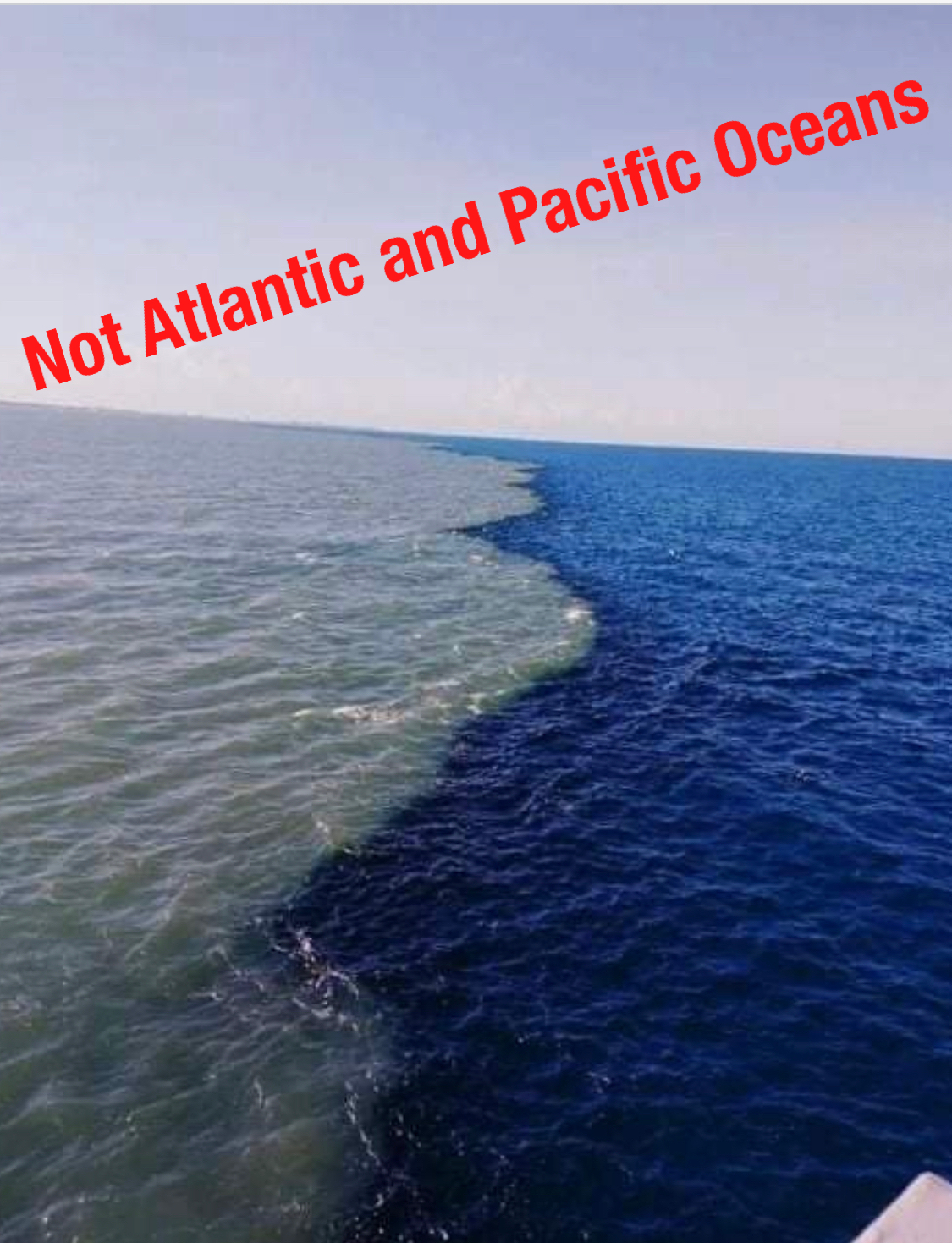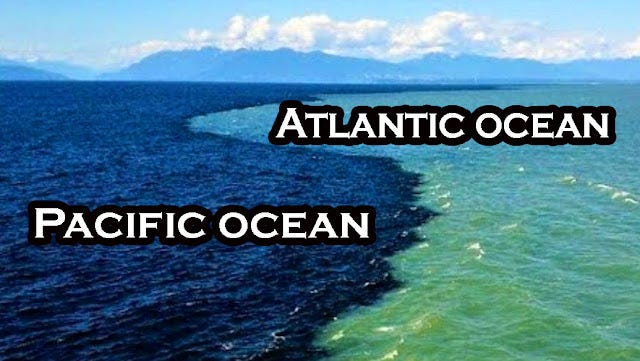Why Does The Atlantic And Pacific Ocean Never Mix

Ever seen a photo of two oceans meeting, but not quite mixing? It's pretty wild, right? It looks like a line drawn in the water, separating two distinct colors.
This isn't some crazy Photoshop trick or a maritime myth. It's a real thing that happens! And it’s way more interesting than you might think.
The "Unmixable" Oceans: What's the Big Deal?
So, why don't the Atlantic and Pacific Oceans just become one giant, uniform blue blob? Well, it's all about science, but don't worry, we'll keep it simple.
Imagine mixing oil and water. They don't really blend, do they? The oceans have similar issues, though not quite the same as oil and water.
Density Differences: A Heavy Subject (Literally!)
One of the biggest reasons is density. Think of density as how "heavy" something is for its size. Cold water is denser than warm water. Salty water is denser than fresh water.
The Atlantic and Pacific have different temperatures and salt levels. These differences create varying densities, making them resist mixing. Imagine trying to stir honey into water - it takes effort because they have different densities!
Surface Tension: Keeping Things Separate
Another factor is surface tension. Water molecules like to stick together. This creates a kind of "skin" on the water's surface.
Different salinity levels affect this surface tension. It’s like having two different strengths of sticky tape trying to merge – they just don’t quite gel.
Current Affairs: Ocean Highways
Ocean currents also play a significant role. These are like giant underwater rivers. They move water around the globe, but they also act as barriers.
These currents can push against each other, further preventing mixing at the surface. It’s like two lanes of traffic going in opposite directions; they stay separate.
Where Can You See This Amazing Phenomenon?
This "unmixing" isn't everywhere. One notable location is near Cape Horn, South America. It's where the Atlantic and Pacific Oceans meet.
Also, the Gulf of Alaska is another place where this phenomenon can be observed. Keep in mind that it's not always a perfectly sharp line. It can appear more as a foamy, turbulent zone.
Why It's So Cool to Witness
Seeing these two oceans "refuse" to mix is visually stunning. It's a powerful reminder of the forces at play on our planet. It showcases nature's complexity and beauty.
It makes you think about the intricate systems that keep our world in balance. It's like a living science lesson right before your eyes!
Plus, it's just plain cool to witness something that seems to defy common sense. It's a natural wonder worth seeking out, either in person or through stunning photos and videos!
So next time you see a picture of the Atlantic and Pacific Oceans meeting, but not mixing, remember the science behind the spectacle. It's not magic, but it sure feels like it!
Go ahead, do a quick online search for "Atlantic and Pacific Ocean meeting." You won't be disappointed by the images you find! Prepare to be amazed by the wonders of our world and appreciate the science that makes it so unique and fascinating.


















